Introduction
Effective communication is a fundamental aspect of human interaction, and for individuals with autism, finding the right methods to express themselves can be life-changing. The importance of text communication methods cannot be overstated, especially for those who face challenges with verbal communication. Studies have shown that many nonspeaking autistic individuals possess significant literacy skills, often underestimated, which opens up a world of possibilities for education, employment, and social inclusion through written communication.
By leveraging text-based methods such as written communication, text messaging, and visual aids, we can provide structured ways for individuals with autism to articulate their thoughts and feelings, reducing frustration and enhancing mutual understanding. This article explores the transformative impact of these methods, offering insights into how they can be effectively implemented to empower individuals with autism and promote their overall well-being.
The Importance of Text Methods in Autism Communication
Text communication methods are vital in enhancing communication for individuals with autism, especially for those who find verbal communication challenging. Research indicates that about one-third of individuals with autism are unable to communicate using speech, yet many demonstrate literacy skills previously underestimated. A study from the University of Virginia revealed that non speaking individuals on the autism spectrum and adults possess a much higher understanding of text language conventions than expected. This discovery supports the investigation of documented methods of interaction, opening up educational, job, and social prospects for nonspeaking autistic persons.
Text-based methods provide a structured way for people to express their thoughts and feelings, reducing frustration and increasing understanding. These techniques encompass recorded correspondence, text messaging, and the use of visual aids, facilitating clearer exchanges between individuals and their caregivers or peers. Creative evaluation techniques, such as a tablet-based game, have indicated that more than half of the nonspeaking autistic participants displayed literacy skills, implying that with suitable teaching and assistance, nonspeaking autistic individuals can utilize written forms as an alternative to speech.
Practitioners implementing these methods find their roles feasible and effective, ultimately offering early, developmentally appropriate, and family-empowering interventions. This approach is more specifically tailored to the needs of very young children with social interaction challenges than other methods. As noted, enhancing augmentative and alternative methods of interaction capabilities is crucial for improving health-related outcomes for people who cannot rely on speech alone to be heard and understood. By adopting these text-based techniques, we can offer nonspeaking autistic people the resources they require to convey their thoughts and engage entirely in society.
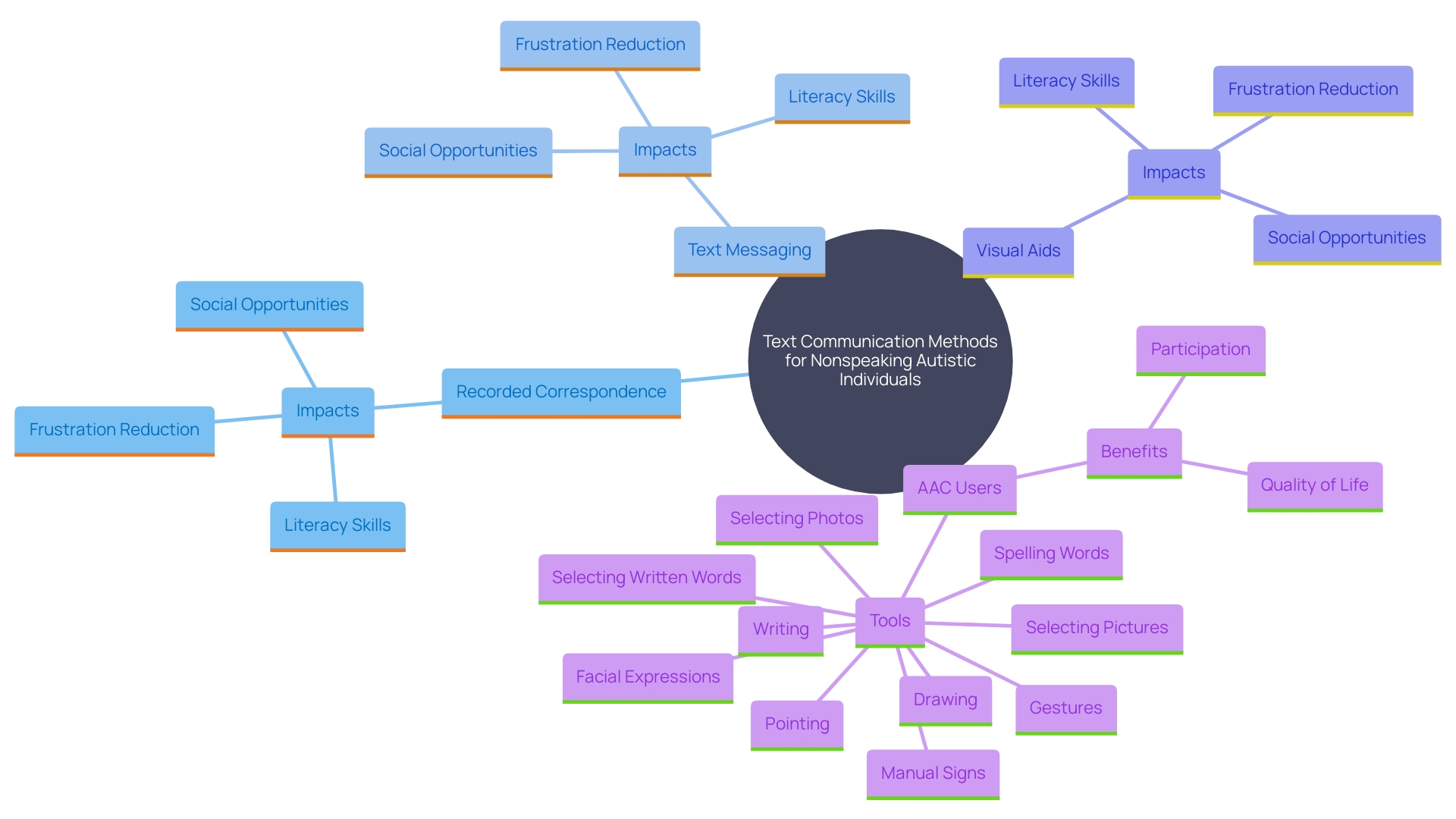
Visual Supports for Autism Communication
Visual aids are revolutionary resources that can greatly improve interactions for people with autism. These supports, which include pictures, symbols, and written words, are essential in conveying messages more effectively and fostering comprehension and expression. The visual depiction of information assists people with autism in grasping and engaging with their surroundings, enhancing their social interaction abilities. For instance, comic books have proven highly effective in this regard. The organized blend of visuals and words in comic books offers a secure environment for children with autism to enhance language abilities and vocabulary growth, interacting with narratives and figures in a manner that conventional methods might not provide.
Visual supports also play a crucial role in assisting people with autism navigate social situations and routines. They offer a reliable method for expressing needs, which is pivotal for building independence and confidence. Early intervention strategies that incorporate these tools can be especially beneficial. Practitioners have found that such interventions are not only feasible but also effective in addressing the core social difficulties of autism. By customizing these supports to the requirements of very young children, practitioners can enhance social interaction results and enable families in the process.
Moreover, creative evaluation techniques, such as tablet-based games, are being utilized to assess literacy skills in nonspeaking autistic persons, showing that many have acquired an understanding of text. This opens up new avenues for written communication as an alternative means of expression. Researchers propose that offering effective visual aids and early intervention can unlock significant educational, social, and employment opportunities for people with autism, ultimately enhancing their quality of life.
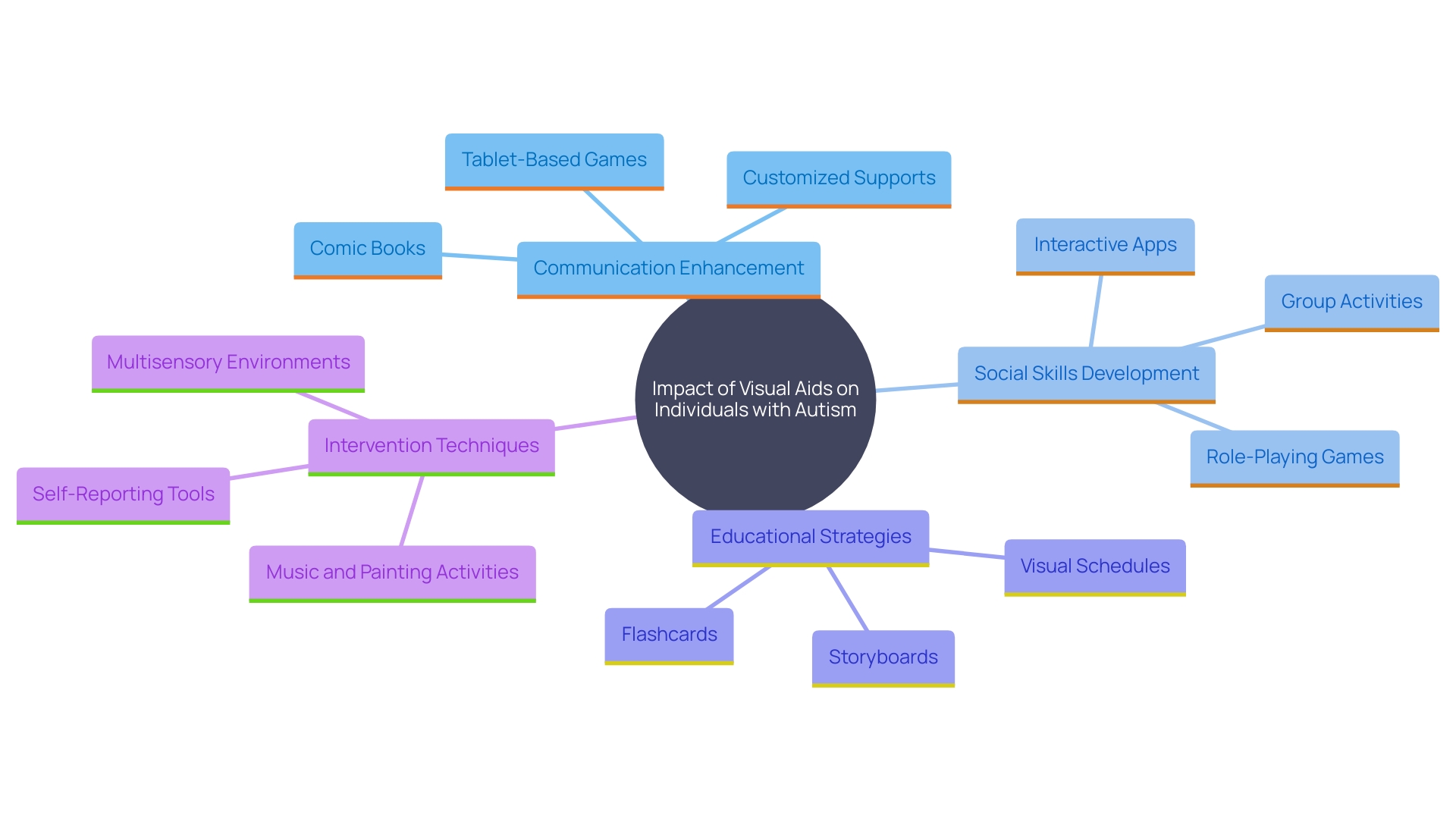
Assistive Technology for Writing
Assistive technology provides transformative solutions that enable people with autism to communicate through writing. Tools such as speech-to-text software, word prediction apps, and text-to-speech programs can make the writing process more accessible and enjoyable. These technologies not only assist in creating text but also improve comprehension and involvement, enabling people to express their thoughts and feelings without the limitations that conventional writing techniques may impose.
The advancements in assistive technologies, like eye-tracking and brain-computer interfaces, represent a significant leap forward in the field of Augmentative and Alternative Communication (AAC). These innovations offer new methods for people with disabilities to engage with the world, making interaction more inclusive and supportive. However, ensuring equitable access to these technologies remains a challenge, as highlighted by Sennott's broader vision for a more inclusive society.
A study from the University of Virginia highlights the potential of text-based communication for nonspeaking individuals on the autism spectrum. Researchers employed a tablet-based game to assess participants' literacy skills, showing that many nonverbal individuals on the spectrum have a significantly greater comprehension of language conventions than was thought before. The research indicates that five times more nonverbal individuals on the spectrum, both teenagers and adults, exhibited awareness of language conventions in text than anticipated from earlier assessments. This discovery supports the investigation of text-based methods of communication to open up educational, job, and social opportunities for nonverbal people on the autism spectrum.
The outcomes are remarkable because they demonstrate that even without formal education in literacy, many individuals on the spectrum have developed an understanding of how text functions. This has important implications for the millions of individuals on the autism spectrum around the world who have little or no speech and who are often assumed to be incapable of acquiring literacy. By harnessing these skills through appropriate instruction and support, it might be possible to provide non speaking individuals on the spectrum access to written forms of communication as an effective alternative to speech, thus significantly enhancing their educational and social prospects.
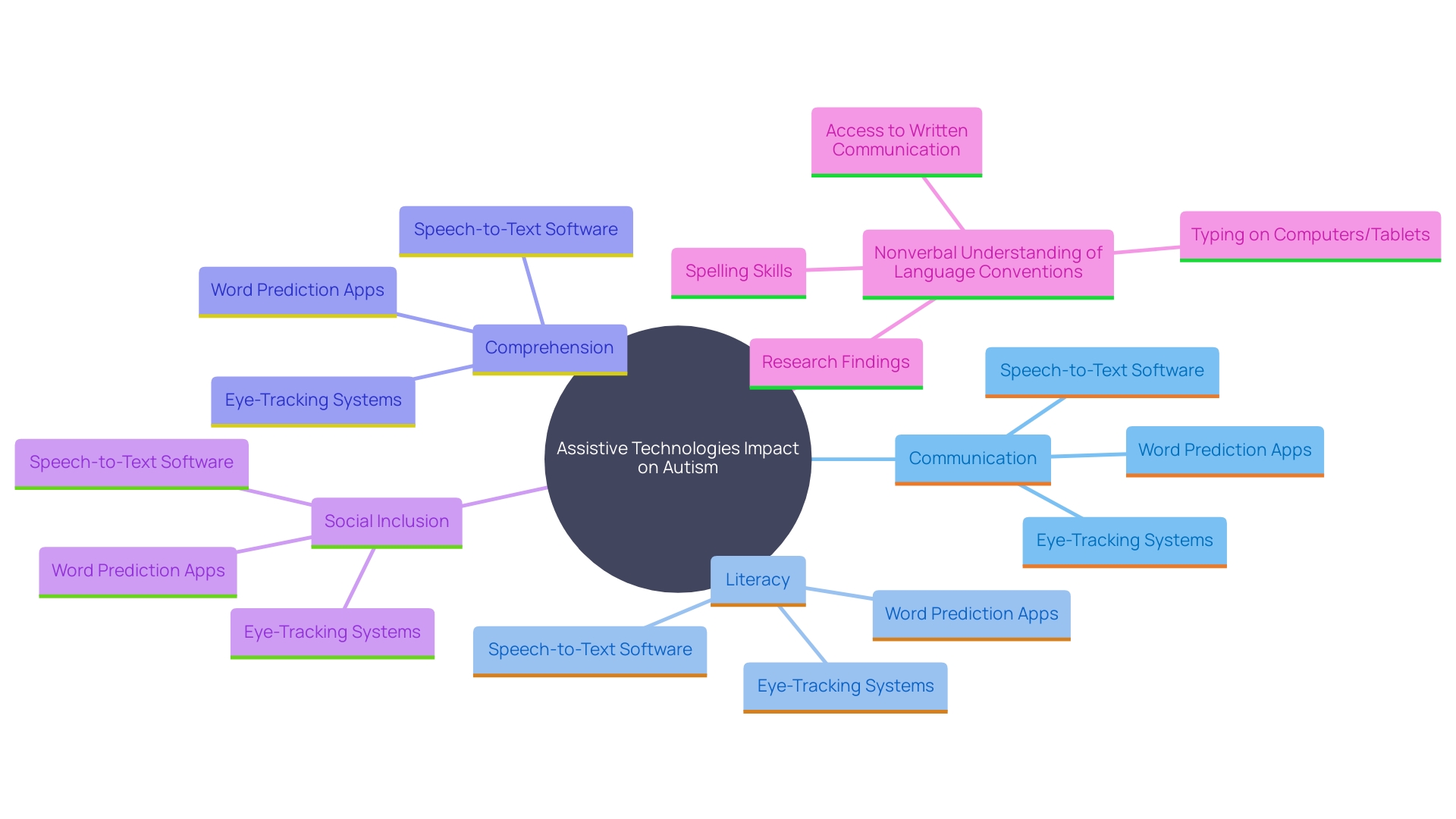
Strategies for Teaching Writing to Students with Autism
Teaching writing to students with autism necessitates customized techniques that appreciate each student's unique capabilities. Incorporating tools like graphic organizers can help structure their thoughts, making the writing process more accessible. Breaking tasks into smaller, manageable steps can significantly reduce the intimidation factor, thereby fostering a positive learning environment. Engaging students by integrating their personal interests into writing assignments can transform a tedious task into an exciting activity.
Consistent feedback and encouragement play a pivotal role in nurturing confidence. For example, a study from the University of Virginia showed that many non speaking people on the spectrum possess foundational literacy skills, often undervalued. This underscores the importance of providing appropriate support to harness these skills, enabling them to express themselves through writing.
Furthermore, real-world applications, such as storytelling, can greatly benefit students. A practical example is using storytelling to captivate students' attention and integrate literacy into every lesson. By weaving reading and writing together, educators and parents can create a holistic approach to literacy.
In essence, adopting these strategies can cultivate a supportive atmosphere that enhances writing skills and encourages self-expression, opening up new educational, social, and employment opportunities for those on the autism spectrum.
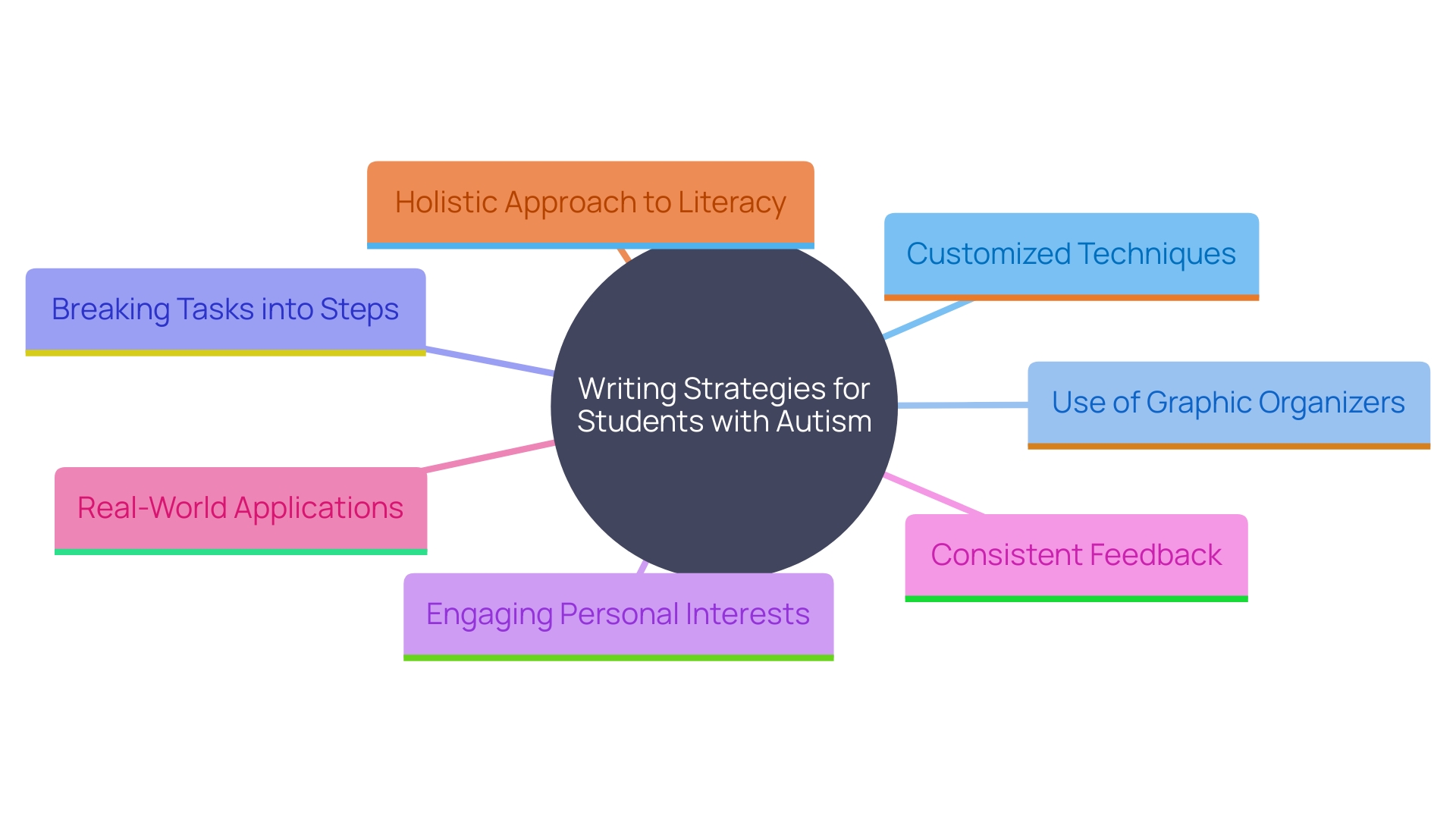
Augmentative and Alternative Communication (AAC) Tools
AAC tools include a broad range of interaction techniques aimed at assisting people with autism who might struggle with verbal language. These tools consist of no-tech/low-tech options such as printed message boards and high-tech solutions including speech-generating devices and mobile applications. For example, the QuickPic AAC app, developed by experts at Boston Children’s Hospital, uses AI to generate topic displays instantly, saving valuable time for educators and therapists.
By utilizing AAC tools, people can convey their thoughts, needs, and emotions more effectively, bridging the gap that traditional methods of conveying information may create. These tools empower individuals to participate more fully in conversations and social interactions. However, there are numerous barriers to access and effective use of these tools. Ideally, individuals who could benefit from AAC should receive immediate and ongoing access to a robust means of interaction once challenges in expressing themselves are identified. This would enable them to establish effective and efficient exchanges that support independent and rich interactions.
Research is essential to understand how to build, grow, and maintain a robust messaging system that adapts to personal goals and needs over time. This is especially important for those with developmental disabilities. A recent 2-day virtual workshop conducted in January 2023, along with a request for information active between July and September 2023, gathered insights from researchers, professionals, and people with lived experiences to address these challenges.
AAC tools, therefore, play a critical role in enhancing the quality of life for people with speech disorders, offering them a means to connect with the world around them.
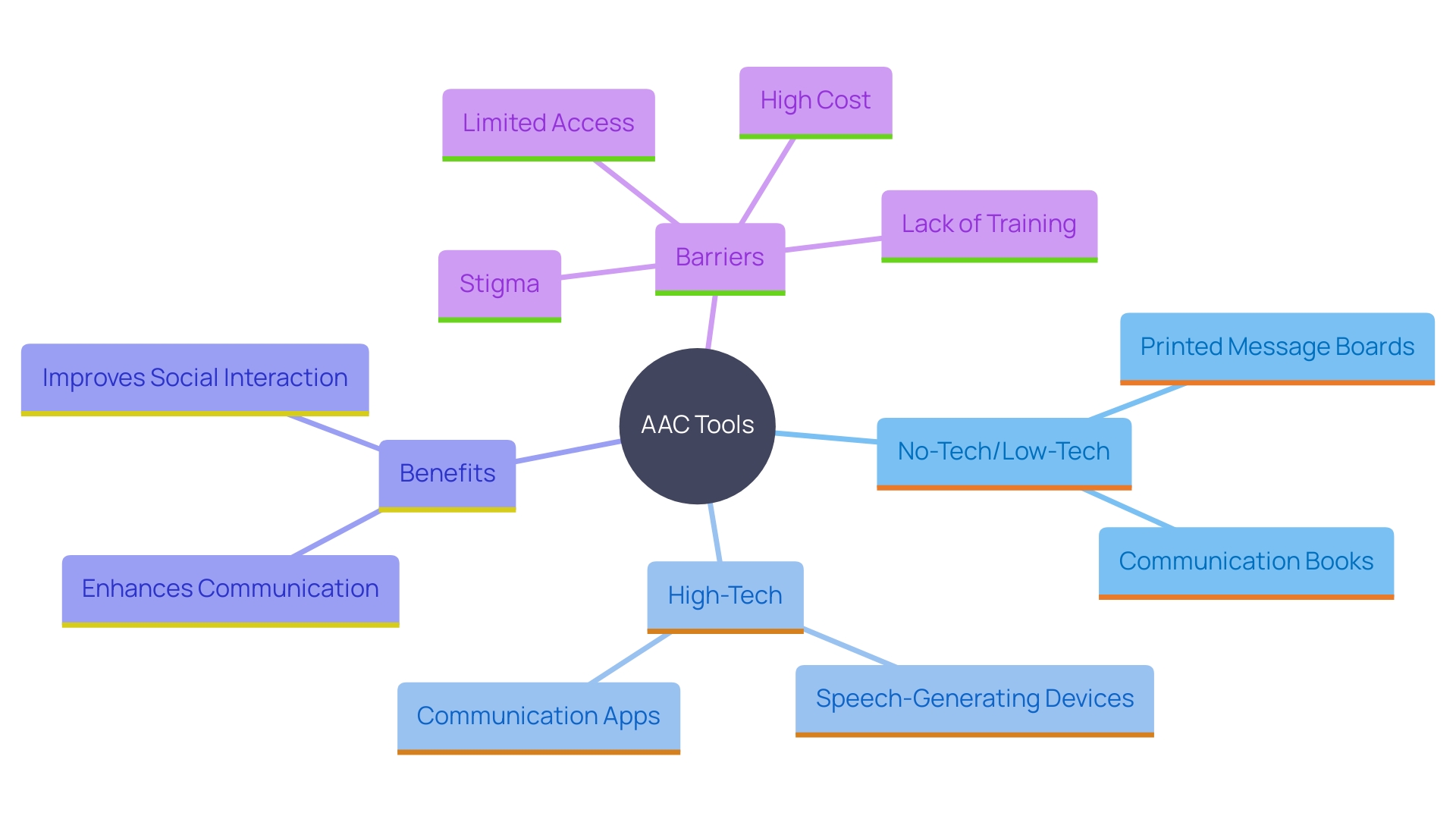
Technology-Aided Instruction and Intervention
Technology-aided instruction and intervention hold transformative potential for enhancing the educational experiences of children with autism. The integration of digital tools, such as interactive software, online resources, and multimedia presentations, enables personalized learning that can accommodate various styles and needs. For instance, educational media can significantly enhance vocabulary learning and promote empathic behavior in children. Understanding the complex relationships between digital media and child development is crucial, as it informs best practices for using technology effectively.
The Council for Exceptional Children emphasizes the importance of individualized learning plans for neurodivergent students, noting the game-changing impact of communicative tools like text-to-speech devices and educational apps. These tools provide students with a voice and enable engagement with learning materials in new and interactive ways.
Investment in this area has seen substantial growth, increasing from $3.4 million in 2020 to an estimated $16.8 million in 2023, highlighting the critical role of technology in education. However, it is crucial to balance screen time, as high levels can lead to negative effects such as atypical sensory processing and exacerbated cognitive and behavioral issues.
Incorporating technology in classrooms not only makes lessons more engaging but also supports the development of self-regulation skills. Augmented reality (AR) applications, for example, have shown significant promise in improving self-regulation among students with learning disabilities.
By leveraging these advanced tools, educators can create a more inclusive and supportive educational environment that meets the unique needs of each student, ensuring they have the resources and opportunities to succeed.
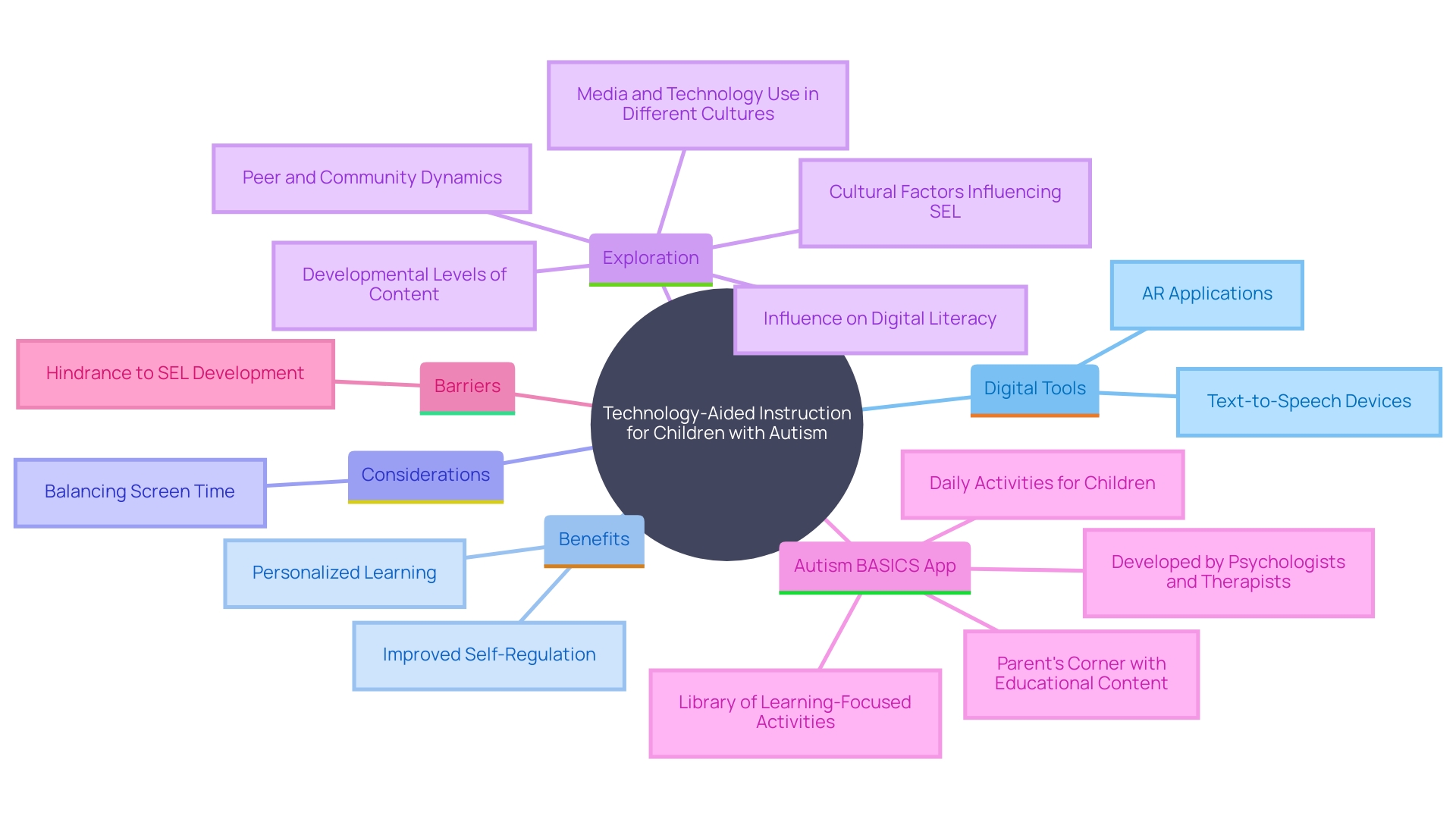
Best Practices for Implementing Text Methods in Autism Communication
'Implementing text-based communication methods for people with autism requires a thoughtful approach that emphasizes consistency and adaptability.'. Creating a communication-rich environment where visual supports are regularly used alongside text is key. This approach not only supports literacy development but also encourages people to express themselves more clearly. A study from the University of Virginia found that many non speaking autistic persons had developed an understanding of text language conventions, despite not receiving formal literacy instruction. This emphasizes the significance of incorporating written forms of interaction to unlock educational and social opportunities.
Encouraging collaboration between educators, therapists, and families is essential to ensure that text methods are effectively integrated into daily routines. According to experts, speech-language pathologists (SLPs) and district-level personnel play crucial roles in supporting these interventions. Involving these specialists aids in creating and directing the execution of outreach strategies that are customized to the distinct requirements of individuals with autism.
Furthermore, augmentative and alternative communication (AAC) tools, which include a wide array of multimodal approaches such as gestures, manual signs, and typing, can significantly improve the exchange of information. Research indicates that more than 5 million individuals in the US with speech disorders gain advantages from AAC, which enhances their involvement and quality of life. By adhering to these best practices, individuals with autism can experience improved communication outcomes and enhanced social interactions.
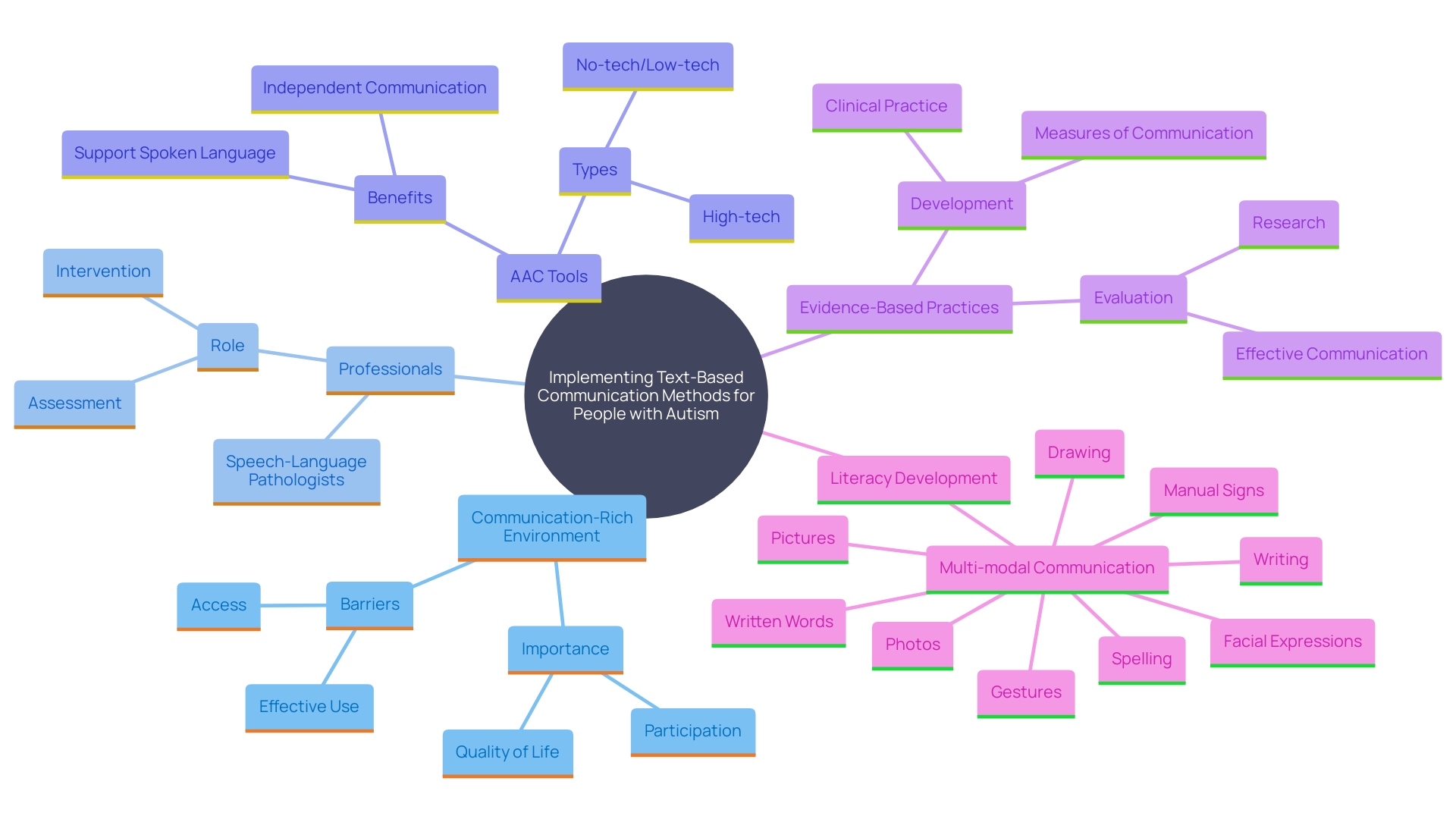
Conclusion
The exploration of text communication methods, visual supports, and assistive technologies highlights their critical role in empowering individuals with autism. By recognizing the often-underestimated literacy skills of nonspeaking autistic individuals, it becomes evident that these tools can unlock educational, social, and employment opportunities that were previously inaccessible. Text-based communication not only provides a structured way for individuals to express their thoughts and feelings but also fosters a deeper understanding between them and their peers or caregivers.
Visual supports, such as pictures and symbols, further enhance communication, making it easier for individuals with autism to navigate social situations and routines. The integration of innovative assessment methods, like tablet-based games, has demonstrated the potential for these individuals to engage with written language in meaningful ways. Additionally, the implementation of assistive technology, including speech-to-text and text-to-speech solutions, represents a significant advancement in facilitating written communication, ensuring that individuals can share their ideas and emotions effectively.
Ultimately, the application of tailored teaching strategies and the use of Augmentative and Alternative Communication (AAC) tools can dramatically improve the communication skills of individuals with autism. By fostering collaboration among educators, therapists, and families, these methods can be seamlessly integrated into daily routines, leading to enhanced social interactions and improved quality of life. Embracing these approaches not only supports the unique needs of individuals with autism but also promotes a more inclusive society where everyone has the opportunity to be heard and understood.




